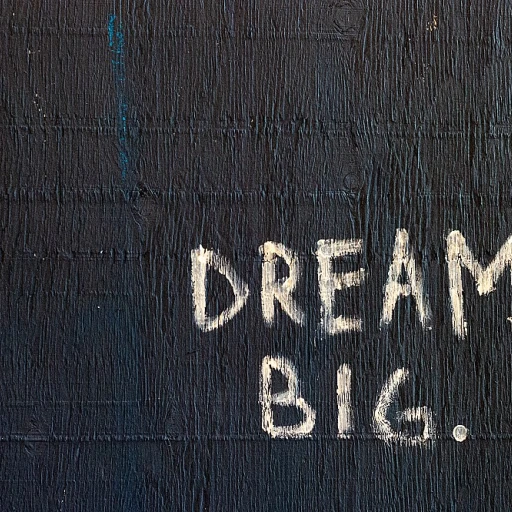
Understanding the Importance of DEI in Candidate Meetings
The Role of Diversity, Equity, and Inclusion in Candidate Interactions
The hiring process is not merely about filling positions within a company. It's an opportunity to integrate diversity, equity, and inclusion (DEI) into the core of business operations. The importance of DEI in candidate meetings lies in its potential to foster a more representative workforce, mitigating the risk of discrimination and fostering an environment where diverse perspectives are valued. Implementing DEI initiatives during these meetings isn't just about checking boxes; it's about creating a sincere, lasting impact. This approach aligns with broader societal efforts to promote civil rights and equity. Federal companies, under numerous executive orders, have detailed guidance encouraging fair and inclusive hiring practices. However, understanding DEI principles is only the start. For DEI programs to be effective, they must be reflected in every stage of the hiring process. Developing inclusive meeting strategies can significantly enhance the job experience for candidates from all backgrounds, whether from marginalized gender identities or diverse ethnic groups. For organizations to succeed in embedding these principles, it's essential to recognize the unique needs of each candidate. Prominent companies' HR policies have noted that when people feel a sense of belonging, they are more likely to engage positively with the hiring process. Crafting effective focus group questions can play a vital role in understanding and enhancing this sense of belonging. A commitment to DEI in candidate meetings is also instrumental in helping businesses evolve beyond affirmative action, moving towards a comprehensive embrace of diversity training. As DEI hiring continues to gain traction, especially among federal contractors, it's crucial to develop an ecosystem where all employees, current and prospective, feel valued and included. In essence, fostering a workplace culture that integrates DEI isn't just beneficial for employees. It positions the company as a leader in progressive business practices, aligning with the broader goals of both the federal government and private sector entities.Strategies for Effective DEI Communication
Implementing Effective Communication Techniques
Effective communication in candidate meetings is crucial for promoting diversity, equity, and inclusion (DEI). Companies must prioritize crafting messages that resonate with diverse teams and ensure the clear conveyance of the organization's DEI commitment. Here are some strategies to consider:
- Use Inclusive Language: Adopting inclusive language is fundamental. It not only helps in making candidates feel respected but also communicates the company's DEI values. Avoid jargon or any terms that might insinuate biases. This approach is vital during the hiring process as it aligns with civil rights principles.
- Feedback Mechanisms: Implementing systems for collecting feedback from candidates ensures that hiring practices are continuously improving. This can aid in identifying any inadvertent discrimination or biases present in meetings.
- Active Listening: Active listening is an indispensable skill for HR teams. It helps in understanding diverse perspectives and builds a sense of connection and inclusion with potential hires.
- Clarity and Transparency: Clearly outlining the company's DEI initiatives and policies to candidates establishes transparency. Discussing how the organization approaches affirmative action, diversity inclusion, and equity inclusion deepens understanding.
- Balance Individualism and Teamwork: It is also vital to balance individual candidate needs with team culture. This concept, further explained in this resource, ensures that while personal strengths are valued, the overall team synergy is maintained.
By implementing these communication strategies, companies can foster an environment where candidates not only feel appreciated for their unique contributions but also understand the company’s commitment to creating an equitable workplace.
Overcoming Common DEI Challenges
Addressing Barriers to Diversity and Inclusion in Candidate Meetings
In the journey of enhancing diversity, equity, and inclusion (DEI) during candidate meetings, companies often encounter barriers that need to be addressed strategically. These challenges can hinder the effectiveness of DEI initiatives and dilute the impact of inclusive efforts. Identifying and addressing these barriers is essential for fostering an equitable hiring environment. One common obstacle in achieving DEI goals is unconscious bias, which often influences hiring decisions and interactions with candidates. This bias can manifest in subtle ways, such as preferring candidates who share similar backgrounds or cultural experiences as current employees. To combat such biases, companies can implement DEI programs that focus on diversity training, encouraging employees to recognize and mitigate their biases. Another challenge involves navigating the complexities of federal and local regulations regarding DEI and affirmative action. For instance, executive orders under previous administrations, like President Trump's, may influence company policies related to DEI. Understanding these regulations ensures that companies remain compliant while supporting diverse hiring practices. Leveraging DEI policies can guide companies in aligning their initiatives with civil rights requirements, thereby promoting an inclusive hiring process. Equity and inclusion require continuous evaluation to align with business goals. Companies need to assess existing DEI efforts regularly to determine their effectiveness. This involves setting key performance indicators (KPIs) to measure success in achieving diverse and inclusive candidate meetings. By embracing diversity equity, businesses can create a meaningful impact that resonates across the organization. Overcoming these challenges also means building an inclusive environment that values diverse perspectives. Ensuring that all candidates and employees feel respected and valued reduces potential discrimination during the hiring process. Companies are encouraged to integrate diversity inclusion into their job interviews and meetings, which supports a culture that champions gender identity and diverse experiences. In overcoming these barriers, businesses differentiate themselves, not just as employers, but as advocates for progress in the broader societal landscape. Evaluating DEI initiatives and investing in robust programs can empower HR teams to overcome the common challenges faced in fostering a truly inclusive hiring environment. For further insights on promoting workplace equity, exploring tools like pay equity tools can provide practical resources for enhancing fairness in the recruitment process.Creating an Inclusive Meeting Environment
Fostering a Welcoming Atmosphere
Creating an inclusive meeting environment is crucial in promoting diversity, equity, and inclusion (DEI) within the hiring process. It begins with acknowledging the diverse backgrounds and perspectives of candidates and ensuring that these differences are respected and valued. This approach is not only beneficial for candidates but also enriches the company culture by retaining diverse talent. To foster an inclusive atmosphere, companies can:- Set Clear Expectations: Establish guidelines that communicate your commitment to DEI policies. Make it clear to candidates and employees that discrimination based on gender identity, race, or any other diversity factor will not be tolerated.
- Be Mindful of Language: Use inclusive language in written and verbal communication. Avoid assumptions about individuals’ backgrounds or experiences, and encourage using gender-neutral terms.
- Inclusive Participation: Ensure that all attendees, irrespective of their diversity background, are encouraged and feel comfortable to voice their opinions and share their ideas during meetings.
- Equip Meeting Spaces: Ensure meeting rooms are accessible and accommodate diverse needs, such as equipment for hearing impairments or flexible seating arrangements to support diverse physical needs.
Training HR Teams on DEI Principles
Empowering HR Teams with DEI Knowledge
In today's dynamic work environment, training HR teams on diversity, equity, and inclusion (DEI) principles is crucial. This training empowers HR professionals to foster an inclusive culture, ensuring that all candidates feel valued during the hiring process. The training should encompass various aspects of DEI, such as understanding unconscious bias, recognizing discrimination, and implementing affirmative action.
Key Elements of DEI Training Programs
- Understanding DEI Policies: HR teams need to be well-versed in company DEI policies and federal regulations. This includes familiarizing themselves with executive orders and civil rights laws that impact hiring and workplace practices.
- Interactive Workshops: Conducting interactive workshops helps HR employees engage with DEI concepts practically. These workshops can simulate real-life scenarios, allowing HR professionals to practice inclusive communication and decision-making.
- Bias Awareness: Training should include sessions on identifying and mitigating unconscious biases that may affect the hiring process. This is essential for creating an equitable environment for all candidates.
- Continuous Learning: DEI training is not a one-time event. Encourage ongoing education through webinars, online courses, and seminars to keep HR teams updated on the latest DEI trends and practices.
Incorporating DEI into Everyday HR Practices
For DEI training to be effective, it must be integrated into daily HR operations. This means applying DEI principles in every stage of the hiring process, from crafting job descriptions to conducting interviews. HR teams should also be equipped to address any DEI challenges that arise, ensuring a fair and inclusive experience for all candidates.
By investing in comprehensive DEI training programs, companies can build a more inclusive and equitable workplace, benefiting both employees and the business as a whole.
Measuring the Success of DEI Initiatives
Assessing the Impact of Diversity and Inclusion in Recruitment
Measuring the success of diversity, equity, and inclusion (DEI) initiatives is crucial for organizations committed to fostering a truly diverse and inclusive work environment. It's not only about implementing DEI policies, but also assessing their effectiveness in real-world scenarios such as candidate meetings and the overall hiring process.
Organizations, including federal contractors and private companies, can begin by setting measurable goals that align with their DEI efforts. For example, tracking the demographic diversity of candidates throughout the hiring process can provide valuable insights into how inclusive a company’s recruitment practices are.
Data collection and analysis play a key role in understanding whether diversity initiatives are translating into tangible results. Companies should leverage data to not only evaluate the number of diverse hires but also to assess the retention rates and job satisfaction among diverse employees. This data ensures that DEI hiring is effective and sustainable over time.
- Surveys and Feedback: Conduct surveys among candidates and employees to gather feedback on their experiences with the company's DEI programs. This information is critical to identify areas for improvement.
- Key Performance Indicators (KPIs): Establish KPIs related to diversity, equity, and inclusion such as the rate of hiring individuals from underrepresented groups or the implementation rate of equity inclusion strategies.
- Regular Reviews: Encourage regular reviews to examine the effectiveness of DEI initiatives against set objectives. Adjust strategies as needed to better align with company goals and broader societal standards.
By continually measuring and assessing DEI initiatives, organizations contribute to a more equitable and inclusive workplace. Moreover, they ensure compliance with government regulations, such as federal executive orders on non-discrimination, influencing proactive action in DEI.












